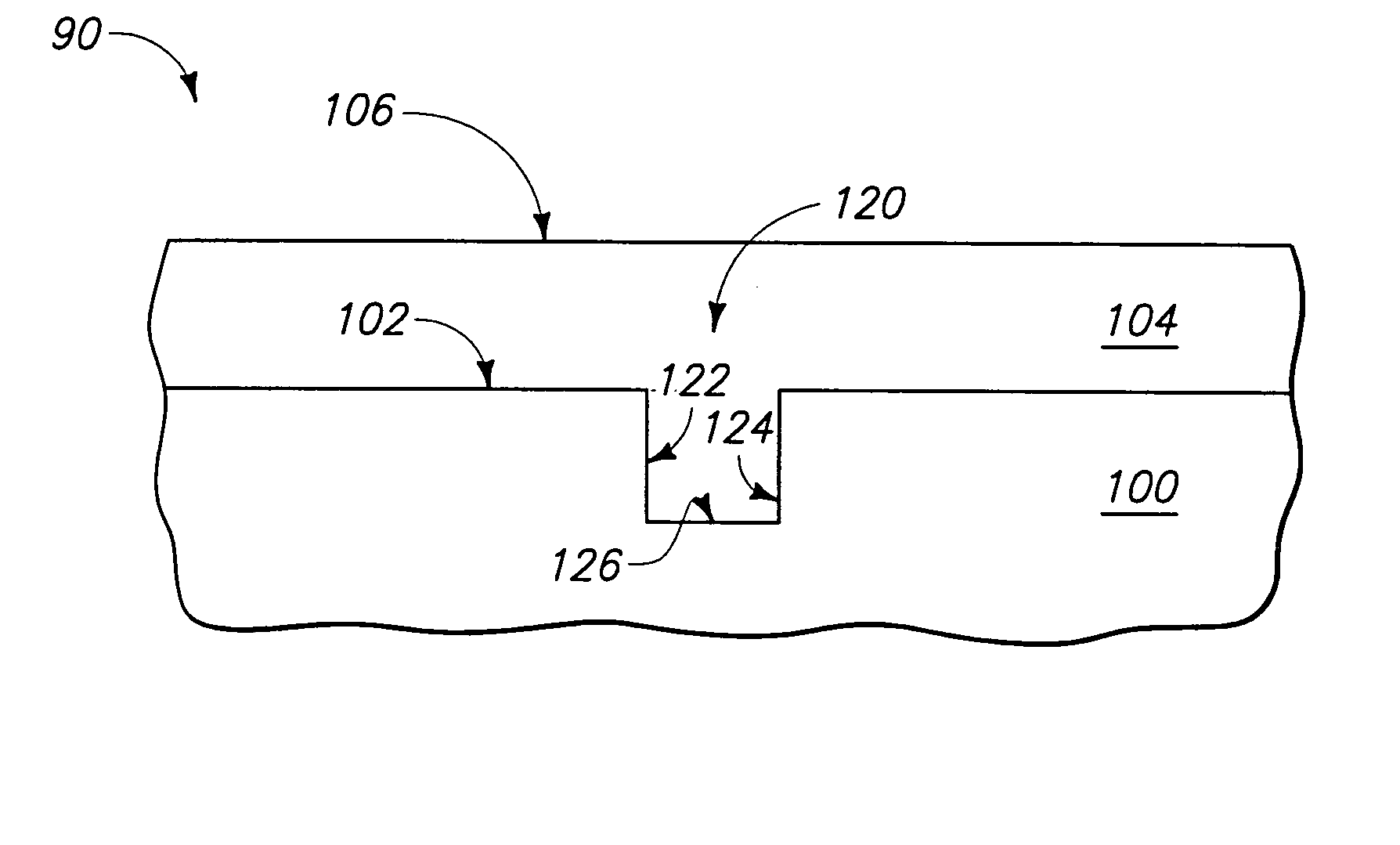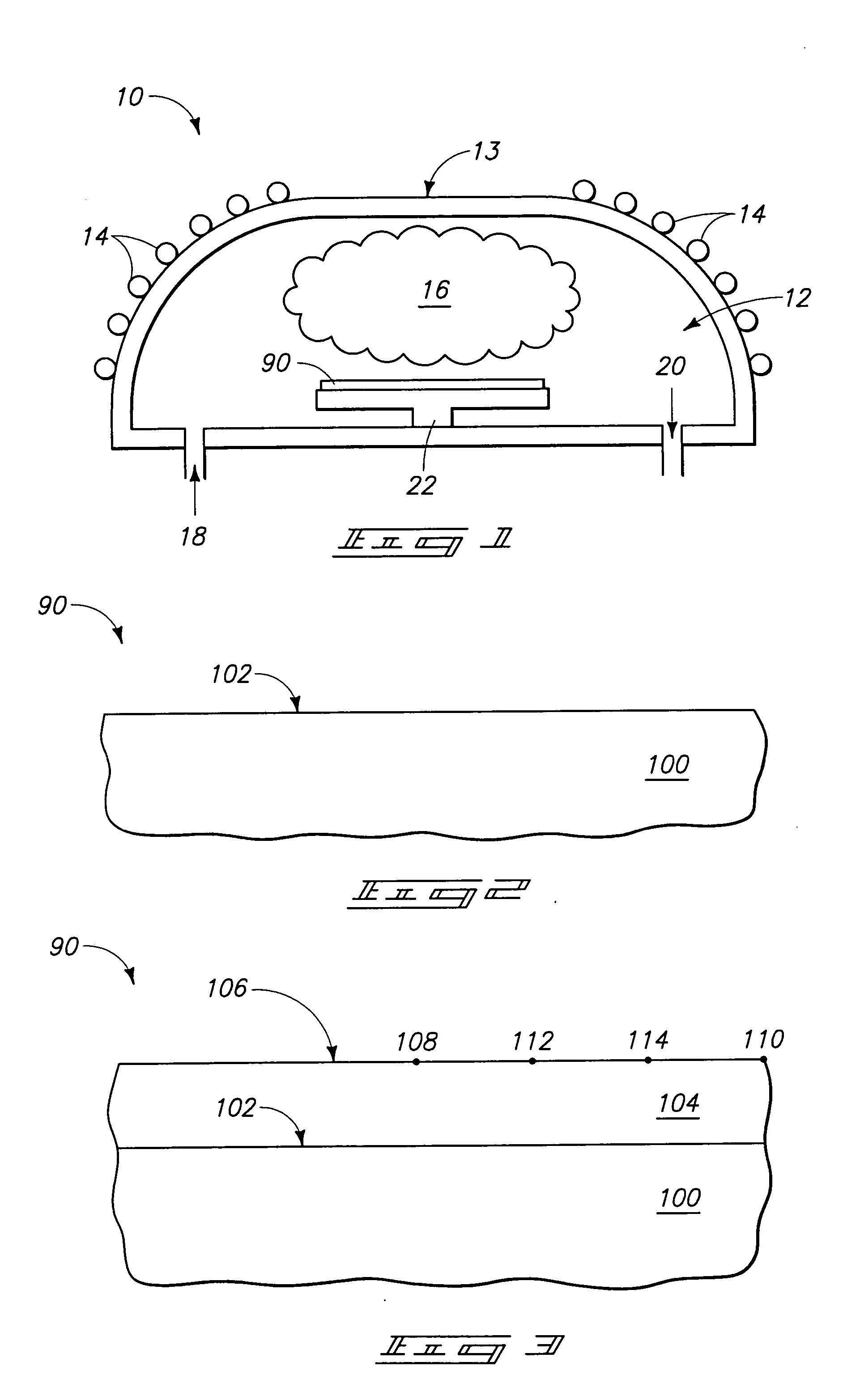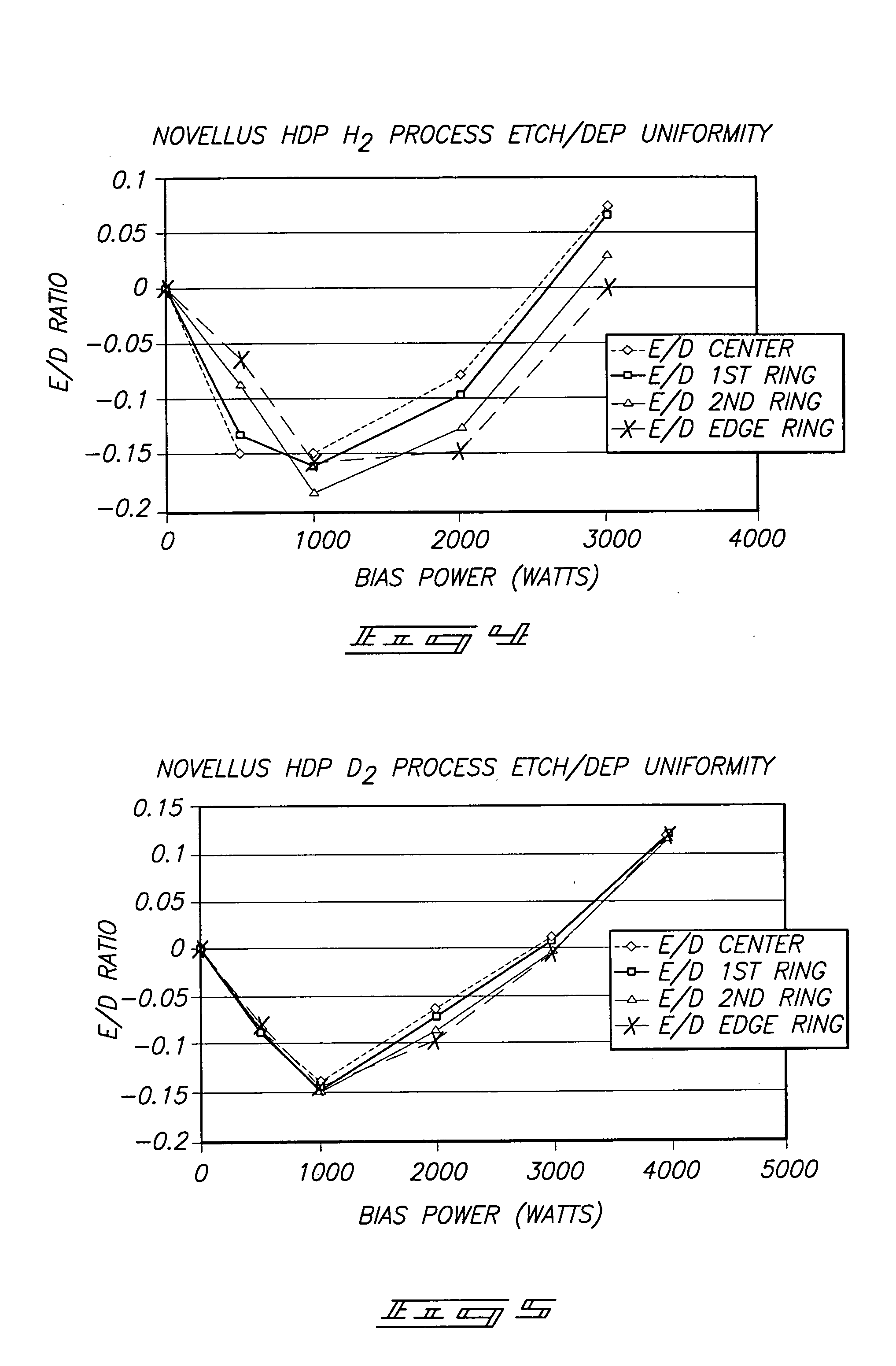Methods of filling gaps and methods of depositing materials using high density plasma chemical vapor deposition
- Summary
- Abstract
- Description
- Claims
- Application Information
AI Technical Summary
Benefits of technology
Problems solved by technology
Method used
Image
Examples
Embodiment Construction
[0018] This disclosure of the invention is submitted in furtherance of the constitutional purposes of the U.S. Patent Laws “to promote the progress of science and useful arts” (Article 1, Section 8).
[0019] The invention encompasses an improved method of depositing layers over a substrate. The layers can be deposited by chemical vapor deposition utilizing one or more heavy-hydrogen compounds. For purposes of the present description, the term heavy-hydrogen can refer to deuterium (D) or tritium (T), and the term heavy-hydrogen compound can refer to a compound having one, some or all hydrogen atoms replaced with D and / or T above the level of natural abundance for the corresponding heavy isotope. More specifically, silicon-comprising layers can be formed by high density plasma chemical vapor deposition (HDP-CVD) in the presence of a heavy-hydrogen sputtering gas, a heavy-hydrogen comprising precursor compound, or both a heavy-hydrogen precursor and a heavy-hydrogen sputtering gas.
[002...
PUM
| Property | Measurement | Unit |
|---|---|---|
| Fraction | aaaaa | aaaaa |
| Power | aaaaa | aaaaa |
| Diameter | aaaaa | aaaaa |
Abstract
Description
Claims
Application Information
 Login to View More
Login to View More - R&D
- Intellectual Property
- Life Sciences
- Materials
- Tech Scout
- Unparalleled Data Quality
- Higher Quality Content
- 60% Fewer Hallucinations
Browse by: Latest US Patents, China's latest patents, Technical Efficacy Thesaurus, Application Domain, Technology Topic, Popular Technical Reports.
© 2025 PatSnap. All rights reserved.Legal|Privacy policy|Modern Slavery Act Transparency Statement|Sitemap|About US| Contact US: help@patsnap.com



